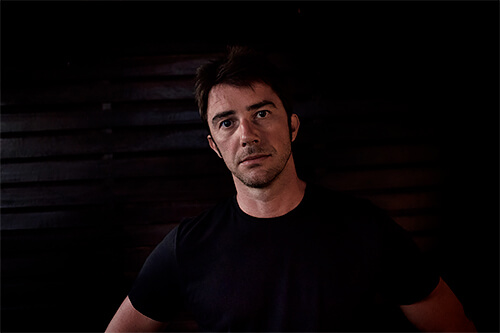Born in Parma in 1976, Marco Gualazzini began his career as a photographer in 2004, with his home town's local daily, La Gazzetta di Parma. His works include reportage photography on microfinance in India, on the freedom of expression in Myanmar, on the discrimination of minorities in Pakistan.
For the last few years he has been covering Africa extensively.
He devised and took part in the creation of a documentary for the Italian national TV network RAI on the caste system in India, which has been selected at IDFA- The International Documentary Film Festival Amsterdam, and has been awarded with the Best Camera Work Award at the Aljazeera International Documentary Film Festival 2014.
Gualazzini published in national and international titles and he has received numerous accolades, including the Getty Images Grant for Editorial Photography, the PDN and the World Press Photo.
Represented by CONTRASTO Agency Resilient is his first book and it's published by ContrastoBooks
PUBLICATION:
The New York Times, GEO, Al-Jazeera, Paris Match, LIGHTBOX- TIME magazine, Courrier International, L'Express, 6Mois, Internazionale, L'Espresso, InsideOver, CNN, M (Le Monde), Der Spiegel, The Sunday Times Magazine, Newsweek Japan, and Vanity Fair.
AWARDS:
Nomination award HPA2011- the Humanity photo awards 2011
Finalist CGAP 2011- Microfinance Photograpy contest
Short-Listed, premio internacional de fotografia humanitaria Luis ValtueÑa 2011
Short-Listed 3rd Lumix Festival for Young Photojournalism, Hannover 2012
Silver Medal, category press-war, Prix de la Photographie 2013
Premio giornalistico Marco Luchetta- Miran Hrovatin 2013, 1st Prize
Getty Images Grants for Editorial Photography Recipient 2013
Short Listed Premio giornalistico Internazionale Marco Luchetta - Miran Hrovatin 2014
Lucie Fondation, Photo Taken Scholarship Recipient 2015
Winner in PDN Photo Annual photo contest 2016
Final 100 to The Other Hundred Educators, The Other Hundred 2016
Photographer of the year All About Photo Awards, 2017
Short Listed - Premio giornalistico Internazionale Marco Luchetta 2017
Wiki Loves Africa, 2nd Prize
All About Photo Awards 2019, 4th Prize
Wiki Loves Africa, 1st Prize
World Press Photo 2019 Photo Contest, Environment, Stories, 1st Prize
EXHIBITIONS & SCREENINGS:
Palazzo Pigorini, Collettiva sulla città con i fotografi NEOS, Parma, Italy, 2009
Galleria d'arte Camera Sedici, Storie in tre scatti, Milano, Italy, 2010
FoFu Phot'arte, Festival internazionale fotografico, Fucecchio (FI), Italy, 2011
Medicos del Mundo, premio Luis ValtueÑa, Madrid, Spain, 2011
The Humanity photo awards, Memories of Mankind VII, con il patrocinio dell' UNESCO, Beijing, Cina, 2011
3rd Lumix Festival for Young Photojournalism, Hannover, Germany, 2012
Angkor Photo Festival, Angkor, Cambodia, 2013
Les Rencontres d'Arles, Screening, Arles, France, 2013
Visa pour L'image, Screening, Perpignan, France, 2013
'Italy. Another View' Vadehra Art Gallery, India Art Fair, NSIC Exhibition Grounds, New Delhi, India, 2014
One Day in Africa - Spazio Oberdan, Milan, Italy, 2014
"One World" - Photofestival Horizonte, Zingst, Germany, 2014
Angkor Photo Festival, Screening, Angkor, Cambodia, 2015
World Humanitarian Summit, Istanbul, Turkey, 2016
Pune Biennale, Pune, India, 2017
Visa pour l'image, Screening in Campo Santo, Perpignan, France, 2017
Spazio Forma Meravigli, solo exhibition , Milan, Italy, 2019
Palazzo Pigorini, solo exhibition , Parma, Italy, 2019
World Press Photo, World Wide, 2019
RESILIENTI2020 - Installation Art Città di Parma, Parma, 2020
Selected Books on

